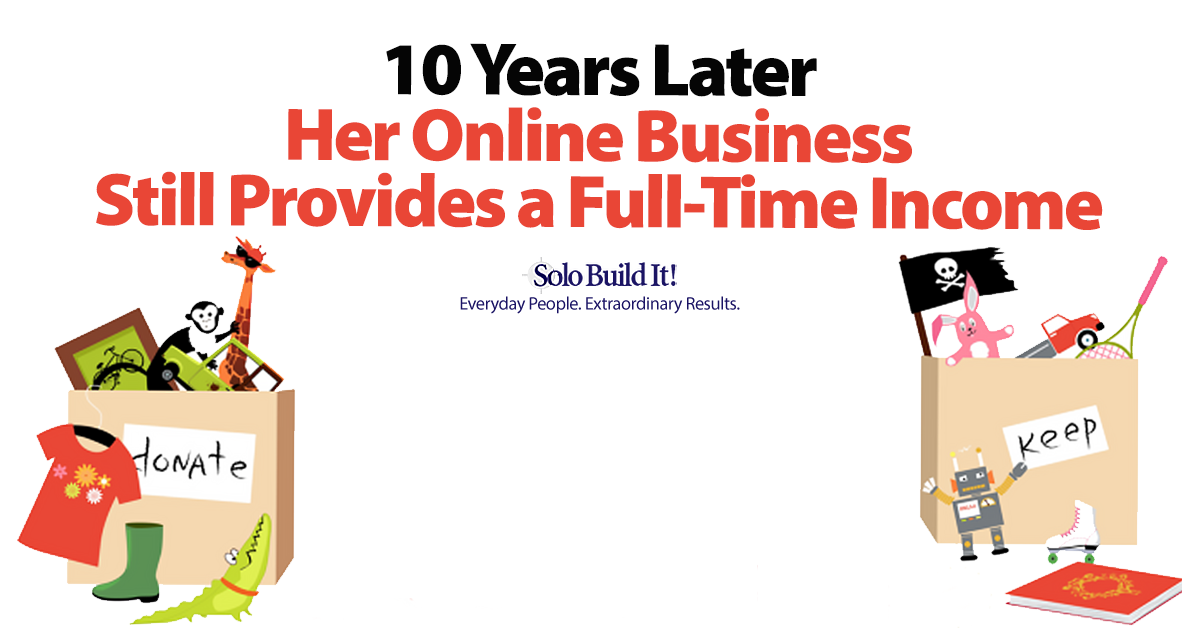I feel like I’ve been able to be a better spouse, parent, and child with the flexibility in managing my time that being the owner of an online business provides.Taylor Flanery, www.home-storage-solutions-101.com
This quote by Taylor Flanery sums up, in a perfect way, the rewards an online business can provide, beyond just money.
Of course, money is nice, too. In Taylor’s case, her business allowed her and her husband to quit their jobs just a few years into her online business journey with Solo Build It!.
Now, 10 years after we first interviewed her, I was curious: Does her home storage and household management business still provide for her family of five?
How has she dealt with inevitable challenges, like major Google algorithm updates, declining reach on social platforms, or income fluctuations?
Some of her answers will probably make you nod along, and others may surprise you, as they did me. One thing’s for sure: you’ll walk away from her interview inspired and with more than a few valuable lessons.
1. Taylor, it’s been nearly a decade since our last interview. Back then, you had successfully transitioned from attorney to full-time online business owner. Please share how your business and your life have evolved since then, especially as you’ve grown into a major community leader in your niche.
I’m still a full-time online business owner, and I couldn’t be more thrilled to have had the privilege for the last decade to support my family with my business income while also being able to set my own schedule each day.
As an attorney, with small children, I really struggled with how to juggle my family life and work, feeling like I didn’t have enough time with my kids or for my career. There were several years where I worked full time, and did my SBI! sites as a side-gig, and that was its own brand of tough.
However, once I was able to transition to full-time work on the sites, with my business income enough to fully support my family, it opened a new level of flexibility for me and my whole family that I’ve truly appreciated for the past decade.
It’s not been easy, but being my own boss has allowed me the flexibility to focus on raising my kids while also bringing in an income to support us all.
I’ve been able to stop work and go to tennis matches or other school activities during the school year, take multi-week vacations and travel trips with the family in the summer or during breaks.

I’ve used the mini-van as a mobile work space as we traveled down the road, and generally got to enjoy time with my family when I wanted and needed to.
It has even allowed me to spend a few days to a week at a time, on multiple trips, at my elderly parents’ house, out of state, to help them declutter their house and get ready to move up closer to me, while still managing my business in the evenings using my laptop.
I feel like I’ve been able to be a better spouse, parent, and child with the flexibility in managing my time that being the owner of an online business provides.
The business has also become a family affair during this time period. My husband works with me daily, and has for many years at this point, doing administrative tasks as well as being in charge of mailing out the printed products we sell.
In really busy seasons (especially around the holidays) or when big projects hit, a couple of my kids have also pitched in to help with various admin or technological tasks, to keep up with sales and marketing.
That helps everyone in the family understand the business and the time and skills it requires, which is an added bonus.
TAKEAWAY #1: A decade later, what’s the biggest evolution in Taylor’s business? It’s not just the income; it’s the profound level of freedom and flexibility she has designed for her life.
Her story is such a great example for the “why” that drives so many of us. She has built a business that allows her to be present for what matters—attending school activities, taking multi-week family vacations, and caring for her elderly parents.
I especially love this part:
“I feel like I’ve been able to be a better spouse, parent, and child with the flexibility… an online business provides.”
This is the real measure of success for being a business owner. It’s not about escaping a 9-to-5 just to work 24/7 for yourself. It’s about creating a business that serves your life, not a life consumed by your business. (Although this remains a challenge for her, as she admits in her answer to question #9.)
2. You told me that this year’s been hard, due to some Google changes (like the HCU, which affected so many solopreneurs). Please tell us more about how you’re dealing with these challenges. How did you adapt your content and marketing strategies?
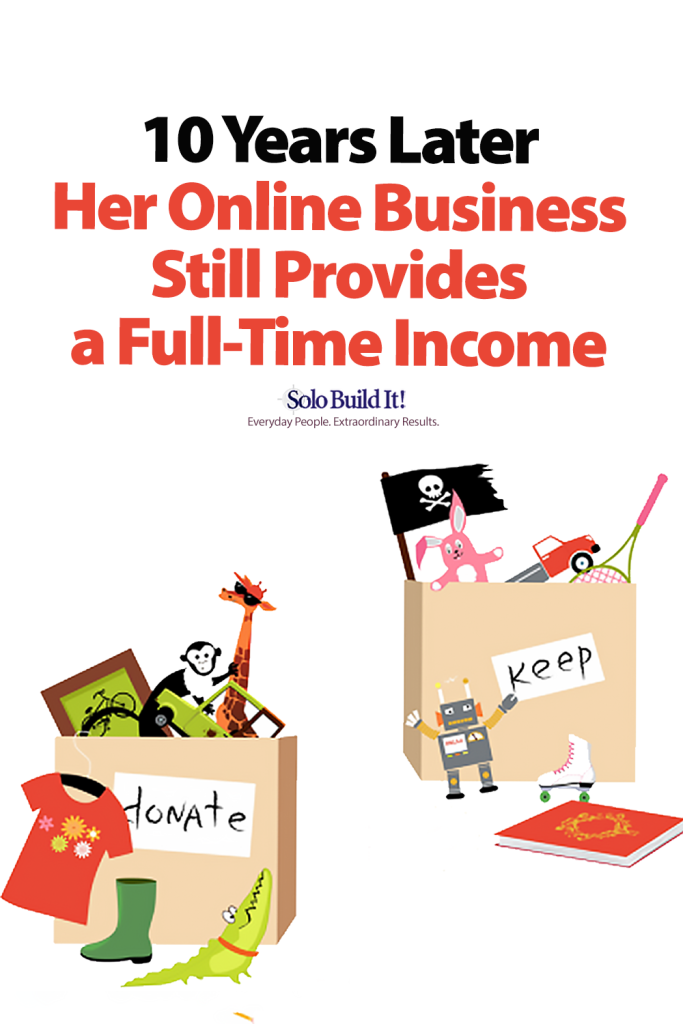
I’m still finding my footing with the changes to my site’s traffic, but I feel like I have options and pathways to success, and that’s important.
Each year I’ve watched with interest how the business evolves and changes, as I introduce new income streams, while old ones become less important. So in some ways this latest change is just more of the same, although it is, admittedly, more challenging than others.
Online business is such a new type of business, with the technology and platforms changing so quickly. For example, in the beginning I used to make most of my money from Google AdSense, then it was affiliate income, and now it’s expanded to include my own products.
Today I have several income sources within the mix and they all have their place. The same thing can be said about traffic sources — they change and evolve over time.
The important thing is to keep evolving, growing, and trying to figure out what my audience wants and needs, and then provide it to them. That’s what I’m working on yet again with these changes in the market, and we’ll see how it goes.
I will also add that the best thing I did for my business was a constant focus to grow and sustain my email list.
This has allowed me, even when there were dips in traffic from other sources, to consistently connect with my readers and share articles and links to my sites, as well as information about sales and products.
In my opinion you can’t have a sustainable business without an engaged email list.
TAKEAWAY #2: Taylor’s response to the traffic challenges teaches us an important lesson: She doesn’t panic; she puts it in perspective.
She sees this latest challenge as just another evolution in a constantly changing business. Her income streams have shifted over time, and so have her traffic sources. This isn’t a catastrophe; it’s the nature of the game.
But her most crucial point is this: the best thing she ever did was grow and sustain her email list.
So, if you haven’t started building your email list yet, get going! It’s the one asset you truly own and control. It provides you with a direct line of communication with your audience, completely independent of unpredictable search engine algorithms or social media platforms.
As Taylor says, it’s what allows her to “consistently connect with her readers” even when traffic from other sources dips. An engaged email list isn’t just a marketing tool; it’s your business’s ultimate safety net.
3. You’ve built an incredible, thriving community on Facebook, with over 1 million members in your Declutter 365 Facebook group. What are some tips you have for growing such a massive and engaged community?
In December 2024 I celebrated my 10th anniversary of the creation of the Declutter 365 public Facebook group.

I’ve been active in that group basically every single day for the past 10+ years. Holidays, weekends, during vacations. Every. Single. Day. This consistency contributed to its growth, with me showing up and engaging with people over and over.
It’s a public group, so the posts can show up on friend’s feeds, as well as a recommendation when Facebook’s algorithm thinks someone may have that specific interest.
I can’t take credit for the luck that happens when the algorithm gods recommend the group, but it’s like the saying goes… all my preparation allowed me to be ready for those lucky times, and helped the group to grow.
When you have a large group like this though, it can easily become its own lumbering giant, and a time-suck instead of a business asset.
I’ve had to work hard to keep it as a business asset that allows me to promote my products for two reasons:
One, there are inevitably people who get offended that I’m advertising my products within the group.
And two, Facebook discourages links to outside sources more and more, as they want users to stay on their platform.
However, I keep promoting my business regularly in comments and posts within the group, and allow those people who don’t like that to find a different place to discuss decluttering.
I must be able to justify the time devoted to managing the group. My time as a solo business owner is limited. I’ve got a full life, and the time I spend on any business task has to contribute to my bottom line, or it’s not worth doing.
TAKEAWAY #3: Growing a Facebook group to over 1 million members is an incredible achievement. There are two key ingredients that contributed to this success: consistency and a business-first mindset.
First, the consistency is staggering: Taylor has been active in the group every single day for 10+ years. Holidays, weekends, vacations—no exceptions. This relentless dedication is what builds trust, fosters engagement, and signals to both members and the algorithm that the group is an active, valuable community.
Second, she’s crystal clear that the group is a business asset, not a hobby. She’s not afraid to promote her products, and she doesn’t cater to members who object to that.
Her reasoning is something every solopreneur should write on a sticky note:
“My time as a solo business owner is limited… the time I spend on any business task has to contribute to my bottom line, or it’s not worth doing.”
Whether it’s a Facebook group, a forum community, or a YouTube channel, you must be able to justify your time investment. Building a huge audience is great, but if it doesn’t support your business goals, it’s just a time-consuming hobby.
4. In 2016, you and your husband were both working on the business full-time to support your family. Is this still your family’s main source of income, and how has your monetization mix shifted over the years?
Yes, my husband and I both still work full time in the business. I actually work about 35 hours a week (and a bit more during busy periods like Q4 through the beginning of each calendar year), while my husband works about 15-20 hours a week (plus more during this same busy period).
It’s very flexible for us, which we both really appreciate. As I mentioned above, my monetization has shifted, and it seems to have different proportions year after year, so it’s important to stay flexible and keep doing more of what’s working at any given moment.
My monetization is still a mix of advertising, affiliate sales and selling my own products. At first, I sold only digital products, including memberships and subscriptions. In the last few years, I’ve added physical printed products to the mix, which we mail to customers.
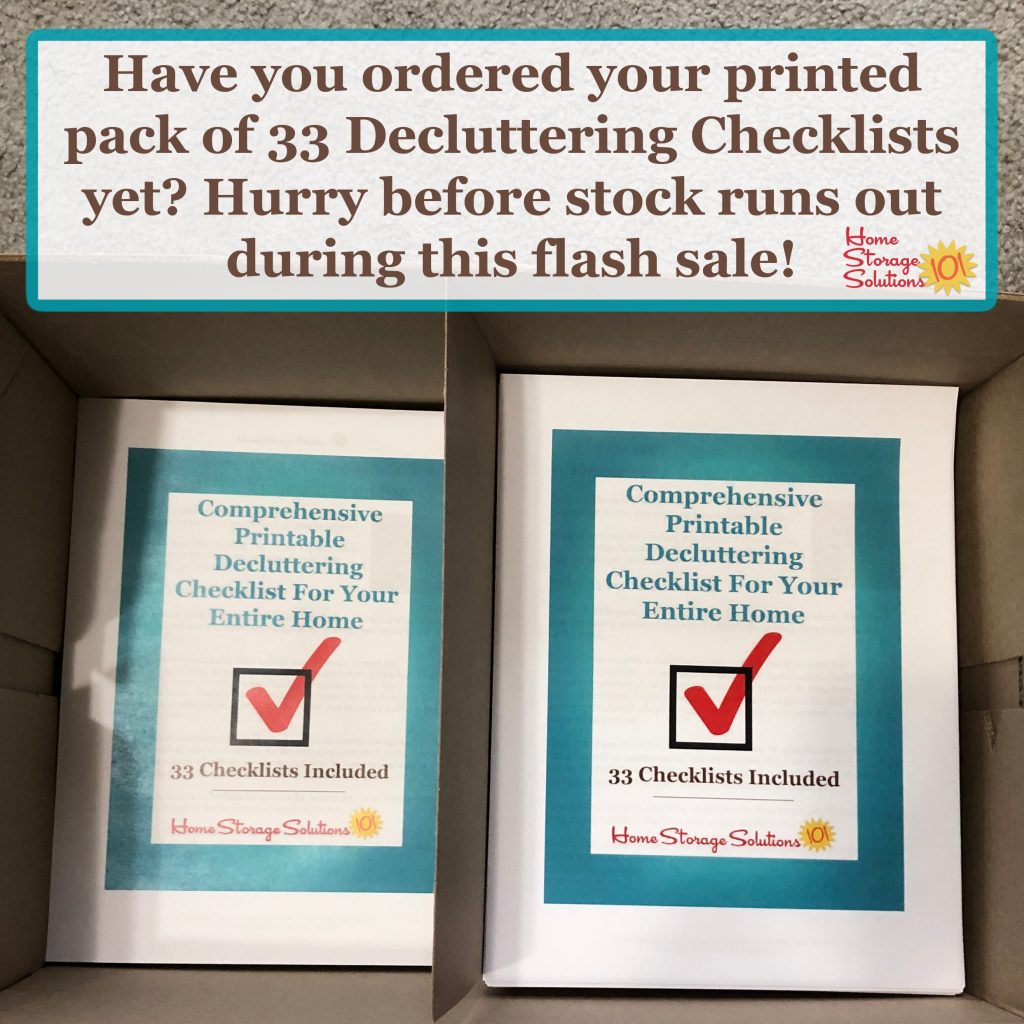
TAKEAWAY #4: Taylor’s monetization strategy is a perfect example of how a business grows and adapts over time.
Like many Solo Build It! members, she started with a classic mix of advertising and affiliate sales. Then she moved into selling her own digital products, a key step for growing your income. Now, she’s even added physical printed products to the mix.
This multi-faceted approach is a smart way to diversify your income and build a more resilient business. As the saying goes… “Don’t put all your (monetization) eggs into one basket.” You’re not reliant on just one income stream, which protects you from market shifts and algorithm changes.
Another takeaway is Taylor’s flexibility. She notes that the proportions of her income change year after year, so she stays focused on “doing more of what’s working at any given moment.”
This is an important ingredient for long-term success. Don’t get complacent. Stay flexible, test new ideas, and lean into what’s delivering results right now.
5. I noticed that you’re offering a paid Facebook Group, the “Declutter 365 Premium Membership.” What inspired you to start this membership, and how has it impacted your income and your day-to-day work?
The premium group membership has been around for seven years. It enabled me to do more video group coaching for members, which led to lots of opportunities to interact with my most loyal customers and build a vault of coaching material.
I used to do weekly video sessions. A couple of years ago I switched to monthly sessions, because weekly was becoming too much.
This membership model added an additional, recurring revenue stream to the income generated from our product sales.
While the recurring revenue is great, I’m currently contemplating how to offer the membership in the future. I need to re-assess whether the income it generates justifies the time it takes to maintain the premium group.
I’m also trying to figure out trends in the industry of what customers want in a membership. All this to say that this offer is potentially in flux this coming year, although nothing has been decided yet.
TAKEAWAY #5: Taylor’s premium membership is a real-world look at this popular monetization model.
The benefits were clear: a deeper connection with her most loyal customers and a predictable, recurring revenue stream.
The challenge? A membership model is not a “set-it-and-forget-it” monetization option. It demands a significant, ongoing time commitment. Taylor has already adjusted from weekly to monthly coaching sessions and is now re-assessing if the income justifies the time.
This is the key takeaway for anyone considering adding a membership to your monetization mix. The recurring revenue is attractive, but you must be ready for the long-term work. Regularly evaluate, just as Taylor is doing, to ensure the model still serves both your audience and your business goals.
6. Your three websites have maintained their classic, 3-column design. Was this a conscious branding decision, or has a major redesign just not been a priority?
I started a redesign several years ago, which never came to fruition (through my own fault, because family issues became too big to keep up and finish the project).
I really need to get back to that redesign, because I think it would help to update the look and feel of the sites. The last few years have just been very busy, and it hasn’t happened.
TAKEAWAY #6: Taylor is honest about her site’s classic design—it’s not a deliberate branding choice; a redesign simply hasn’t been a priority for her.
Some people criticize Solo Build It! for not having the most modern website templates with all the bells and whistles. Taylor’s story proves, once again, that design is not the main success driver.
Taylor’s success is built on the quality of her content, her deep connection with her community, and a monetization strategy that works. The “look and feel” is secondary to the value she provides.
Don’t let the pursuit of a “perfect” design stop you from focusing on what truly matters: creating great content and providing the solutions your audience wants and needs.
7. How do you do it all? Keeping up with three sites, three Facebook Pages, a free group and the paid membership is no small feat. Are you using Tai or other AI assistants to help manage your workload?
How do I keep up? I don’t, unfortunately.
While I love all three of my sites, I’ve focused on Home-Storage-Solutions-101 for many years since that’s the site which is generating the bulk of my income, while the others have sat mostly idle.
I’ve also developed a lot of systems to keep the administrative portions of the sites moving forward. There are systems and processes for social media scheduling, administering the groups, working on the editorial calendar, updating and sending out content, as well as for writing email newsletters regularly.
My editorial calendar includes not just content, but also marketing, for example for doing affiliate promotions and marketing and selling my own products.
I don’t currently use any AI within my business.
TAKEAWAY #7: “How do I keep up? I don’t.”
I had to chuckle when I read Taylor’s honest answer. Don’t we all feel like that? When you build your business as a solo entrepreneur, it’s impossible to do everything.
Taylor realized that and rather than spreading herself thin, she concentrates her energy on the one site that delivers the most value.
She relies on proven systems and processes to keep the administrative parts of her business moving, not on trying to do it all herself.
I also asked her why she isn’t using AI. She feels that AI can’t provide the accurate information her customers need, and that instead she relies on her 10 years of experience in her field.
We agree one hundred percent that your experience has to be at the core of your business strategy. However, we also believe that tools like our own AI assistant, Tai, can help to lighten some of your workload as a content creator. It can also serve as an excellent sparring partner for new ideas.
8. You’re a featured speaker at events like the “Get Organized HQ” conference. How important are these collaborations and speaking engagements for your brand, and what benefits do they bring to your business?
I’m quite selective when it comes to summits and conferences, and only participate in those that I enjoy and that help me get exposure with new audiences who are interested in my topic, like for example the recent “Get Organized HQ.”
These conferences help me network with other business owners within my niche, or related niches, and this can lead to more business opportunities and collaborations.
And finally, I choose conferences and summits where I believe in the quality of the presentations and information offered, because I then can also be an affiliate for these events.
This leads to a triple win for me: exposure to new audiences, collaboration and networking with other business owners, and income through affiliate sales.
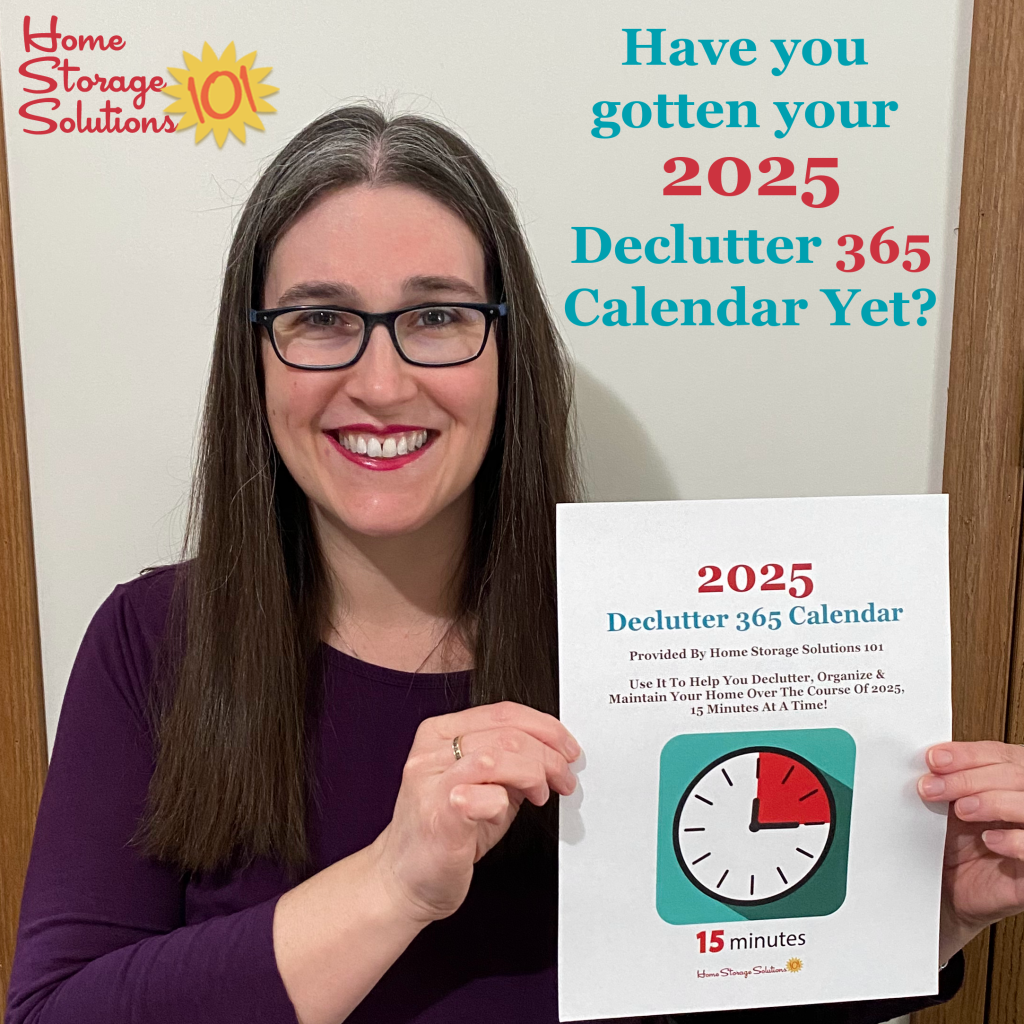
TAKEAWAY #8: Taylor is very strategic about collaborations like the “Get Organized HQ” conference. She doesn’t say “yes” to everything. Her approach provides a smart checklist for any solopreneur.
She only participates if the event delivers a “triple win“:
- Exposure: It gets her in front of a new, highly relevant audience.
- Networking: It connects her with other business owners for future collaborations.
- Income: She can also earn money as an affiliate for the event.
This is a fantastic framework to use for your own business. Before you agree to any collaboration or speaking engagement, ask yourself: Does it offer exposure, networking, and a potential income stream? By being selective, Taylor ensures that her time investment always delivers a significant return.
9. After all these years, what is the single most rewarding aspect of being an online entrepreneur? And what has been the biggest, unexpected challenge you’ve had to overcome?
I love to be in control of my own schedule, and being an online entrepreneur allows that. It is wonderful to be able to head to an exercise class mid-morning, or take a walk, or throw in a load of laundry as needed.
I can also go to activities with my kids for school or sports, or just take a long lunch break with my husband. I love all those freedoms that being my own boss gives to me.
On the other hand, being an online entrepreneur, as with any business, also means that you work without much of a safety net. If you get sick or want to take a vacation, you still need to make sure the work gets done somehow, or accept the consequences of it not getting done.
It has also been hard to wrap my head around the concept that the amount of work I do is not directly related to my compensation.
I’ve had to learn to work smarter, not harder, because some things bring in more revenue or get better traffic than others, and I need to make sure I am not wasting time or effort on low return tasks.
I know that if I’m not careful I could work and work and work, all the while forgetting to take the necessary downtime to avoid burnout.
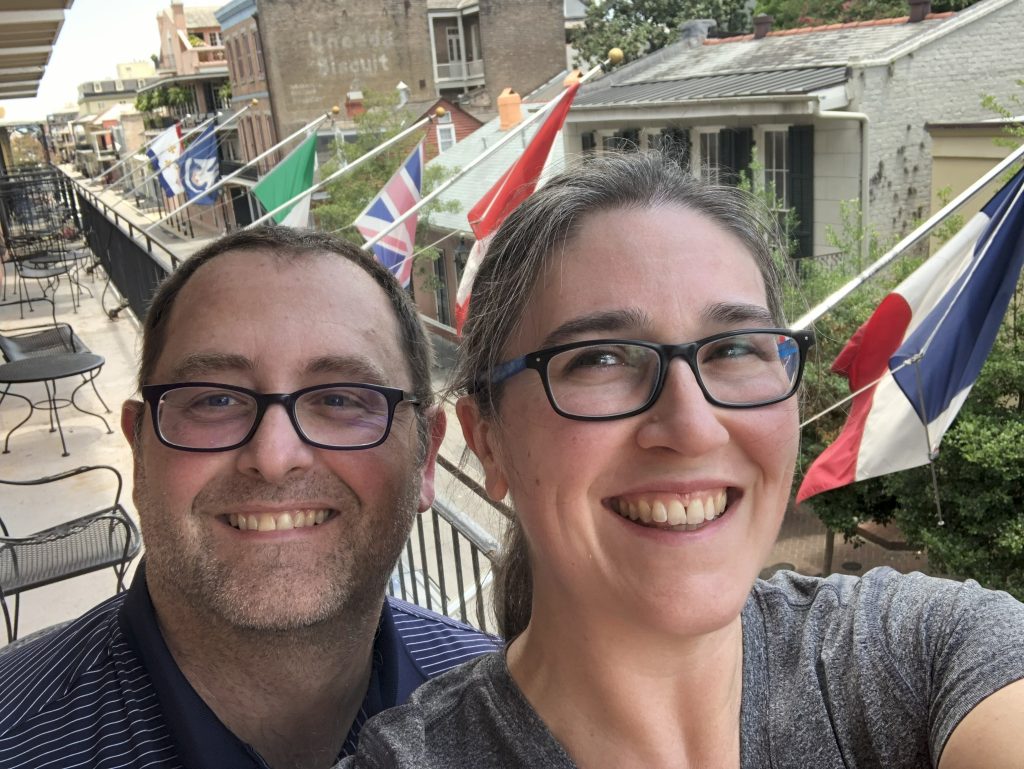
TAKEAWAY #9: Taylor’s answer perfectly captures the two sides of the solopreneur coin.
On one side, the reward: freedom and control over your own schedule. As we saw in Takeaway #1, this is the core of Taylor’s success story.
On the flip side of that freedom: there is no safety net. You are responsible for everything, and the work is always there. This brings us back to the point I mentioned in the first takeaway—Taylor’s ongoing challenge of not letting her business consume her life.
She shares a critical lesson:
“I’ve had to learn to work smarter, not harder, because some things bring in more revenue… and I need to make sure I am not wasting time or effort on low return tasks.”
This is the key to sustainable solopreneurship. It’s not just about putting in the hours; it’s about putting your hours into the right things.
10. Finally, what is your most important piece of advice for website owners or bloggers who might be facing declining Google traffic?
I mentioned this above, but for me, I believe that the most important thing for website owners to do is start and maintain an email list, and that email list needs to point to a website that you own (as opposed to just pointing to social media, where your account is precarious and not within your control).
The email list needs to be growing consistently, and you need to have a mix of relationship building content along with occasional content designed to market and sell your products, services, or otherwise make some money to sustain your business.
This allows you to weather the ups and downs of social media and search algorithms better, and to build trust and relationships with people to help them find quality solutions to the issues your business addresses.
TAKEAWAY #10: I’ll be honest, this answer surprised me. Given Taylor’s massive success on Facebook, I expected her final piece of advice to be about social media.
Instead, her #1 recommendation for building a sustainable business is to start and maintain an email list.
This is a valuable lesson from someone who has mastered both. She knows that while social media is great for reach, it’s a platform you don’t control. As she says, your account is “precarious.”
Your email list, however, is an asset that you own (like your website).
It’s your direct, reliable line of communication to your audience, independent of unpredictable algorithms. It allows you to build deep trust and relationships over time. And it gives you a stable platform to market your business through all the ups and downs of search and social trends.
TL;DR? Here are the key lessons from Taylor’s SBI! success story.
How Do You Build a Long-Term, Profitable Online Business in Any Niche?
- Design Your Business to Serve Your Life: Taylor’s business is a tool that enables her to be present for her family. By prioritizing flexibility, she has built a successful career that fits her life, not a life consumed by her career.
- Own Your Audience With an Email List: Despite her massive social media following, Taylor’s number one piece of advice is to build your email list. It’s the only asset you truly control, making it the ultimate safety net against unpredictable algorithm changes.
- Build a Community With Purpose: Her 1-million-member Facebook group isn’t a hobby; it’s a business asset. She built it with relentless consistency and a clear understanding that her time investment must contribute to her bottom line.
Evolve and Diversify Your Income: Taylor didn’t stop at AdSense. Her income grew as she evolved from ads to digital products, then to a premium membership, and even physical products. This diversification creates a more stable and resilient business.
Taylor’s story shows what’s possible when you combine passion with consistency and a proven process. She is just one of thousands of “everyday people” who have built successful, life-changing businesses with Solo Build It!.
Want to learn from more SBI! Success Stories?
If you found Taylor’s story inspiring, sign up for our free 10 Real Life Success Lessons email series. Each day, you’ll meet another successful SBIer and discover a unique, actionable lesson to help you on your own online business journey.
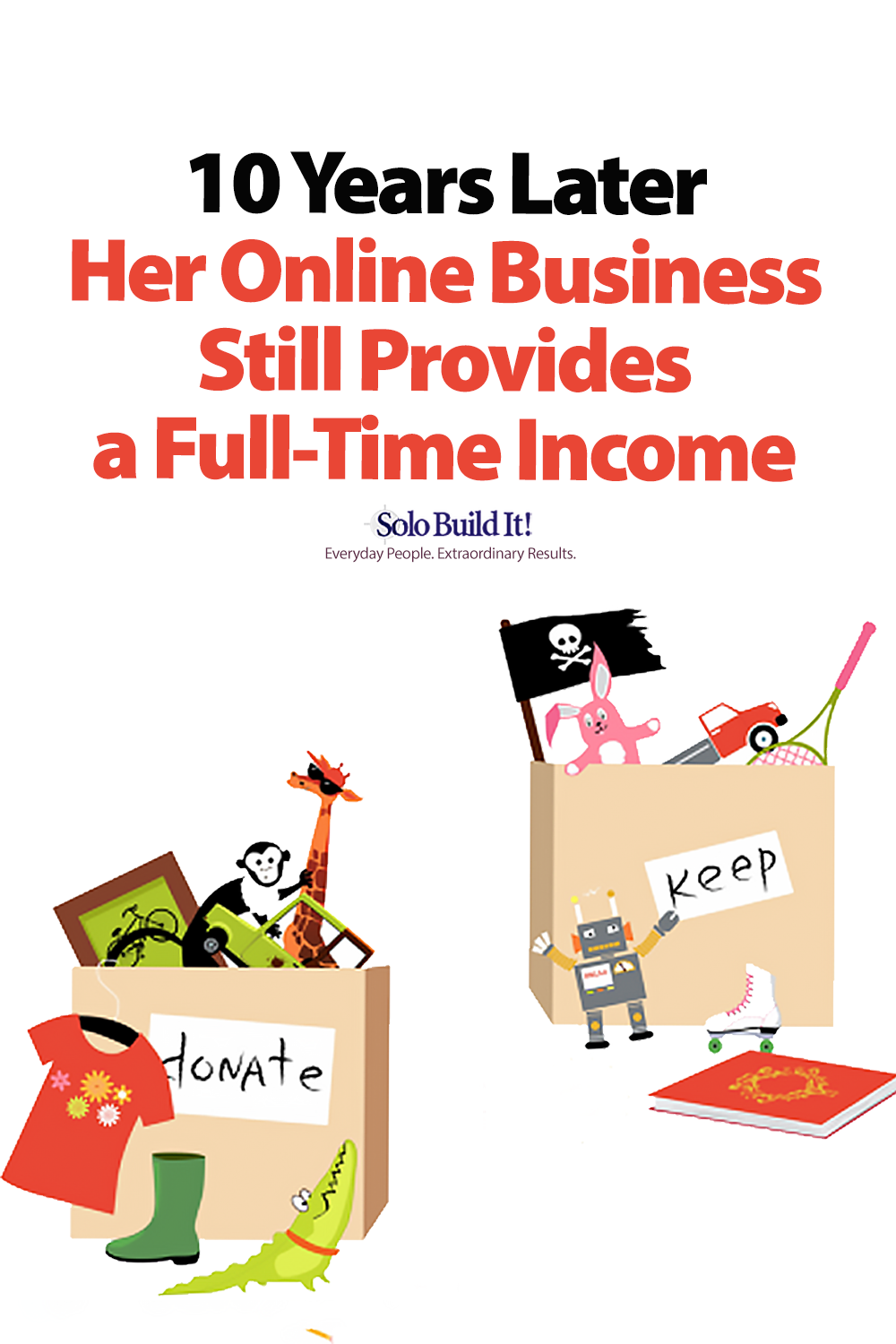
Latest posts by Margit Streifeneder (see all)
- From Zero to 1 Million Fans: A Community-Driven Success Story - October 16, 2025
- Six Figures on Her Terms: A Lifestyle Business Success Story - September 25, 2025
- From Sheds to Sales: A 20-Year Digital Product Success Story - September 11, 2025


